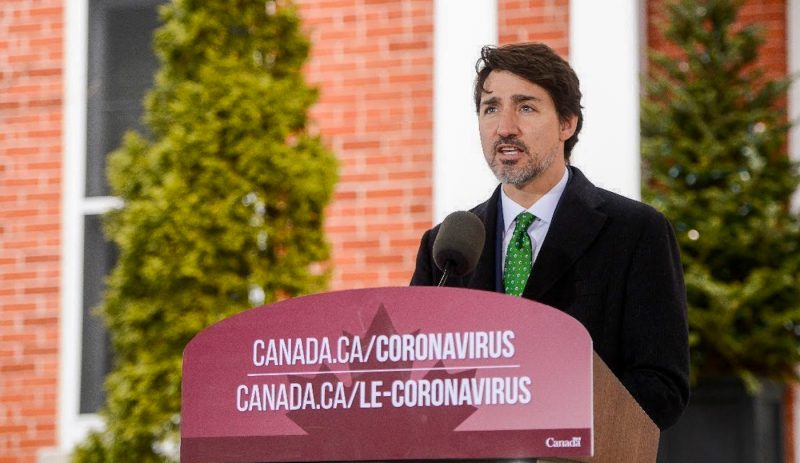Govt. aid to keep seafood on your plate
Government support of $62.5 million critical to provide safe, healthy and sustainable farm-raised and wild-sourced seafood products, says industry
By Fabian Dawson
SeaWestNews
Canada will pump $62.5 million into the wild and farmed fisheries sectors and the seafood production industry to ensure the collective food security of the nation.
In announcing the financial support today, Prime Minister Justin Trudeau said the funds will go toward protecting workers and putting in place recommended health guidelines within the industry.
“We’re giving more money to processors so they can purchase personal protective equipment for workers, adapt to health protocols and support other social distancing measures,” Trudeau said.
“For example, fish processing plants could buy new equipment, like freezers or storage space, so that their product — food for Canadians — can stay good while they respond to a changing market.”
Bernadette Jordan, Minister of Fisheries, said the new Canadian Seafood Stabilization Fund will be delivered through the Atlantic Canada Opportunities Agency, Canada Economic Development for Quebec Regions, and Western Economic Diversification Canada.
“This investment will help ensure the resilience of the food system by allowing Canada’s fish and seafood processing sector to safely and efficiently process, store, package, and distribute healthy, high-quality products, sourced from our fish harvesters and aquaculture operators, onto the plates of Canadians,” Jordan said in statement.
“The women and men in our fish and seafood sector have been feeding this country for generations…Bolstering our processing sector is vital to supporting fish harvesters and feeding Canadians.”
The support is critical to ensuring the continued operations of our sector as we adjust to the latest public health guidance during the COVID-19 pandemic, said the Fisheries Council of Canada (FCC) and the Canadian Aquaculture Industry Alliance (CAIA), in a joint statement.
“It has been the top priority of our members to ensure the health and safety of our frontline employees while we continue to provide the essential service of supporting the food supply chain,” said Paul Lansbergen, President, FCC. “Many additional measures have been put in place to respond to social distancing mandates and market disruptions, which have come with significant costs.”
“Together, our industry continues to work to provide safe, healthy and sustainable farm-raised and wild-sourced food products,” said Timothy Kennedy, President & CEO, CAIA, whose members generate over $6 billion in economic activity, $2.45 billion in GDP, and employ over 25,000 Canadians.
“This support will help to ensure our industry remains operational to support Canadians at this critical time and as we begin to recover from this crisis.”
The new Canadian Seafood Stabilization Fund will help businesses:
- access short-term financing to pay for maintenance and inventory costs;
- add storage capacity for unsold product;
- comply with new health and safety measures for workers;
- support new manufacturing/automated technologies to improve productivity and quality of finished seafood products; and,
- adapt products to respond to changing requirements and new market demands.
David Stover, co-owner of Brown’s Bay Packing Company in Campbell River which processes about 40 percent of the salmon raised in B.C. waters, said COVID-19 has tripled the cost of his operations.
“We have tripled our staff that now work in smaller shifts with staggered break and meal times,” said Stover.
The company has also equipped workers with additional personal protective equipment, implemented check-ins with incoming shifts, having managers meet in the parking lot with each employee individually to see how they’re doing and to make sure they have no symptoms.
“Today’s funding announcement will help…we need to see how it is distributed and how much will flow to the west coast,” said Stover.
Shawn Hall, the spokesperson for the B.C. Salmon Farmers, said his association is awaiting details to understand what opportunities and resources will exist for the province’s salmon fishery.
“The pandemic has created economic challenges, and our production has shifted,” he said.
“In typical times, many BC salmon farmers sell a significant amount of fish into restaurants and hotels, which are necessarily curtailing business at this time.
However, retail sales are stable and actually increasing in some markets as families look for healthy meals to cook at home. That does not make up for declines in restaurant sales, but it helps. The situation is challenging, but we are resilient.”
Consistently ranked as the 4th largest farmed Atlantic salmon producer in the world, farmed salmon is B.C.’s highest valued seafood product, the province’s top agricultural export and generates over $1.5 billion towards the B.C. economy.
There are approximately 7,000 total full-time equivalents (FTE) positions supported by the B.C. salmon farming industry. In B.C., 86% of the province’s salmon harvest salmon comes from farms.
The 196,300-tonne commercial fishery 2018 harvest generated a total landed value of $476.4 million – up 19.7percent over 2017.
Across Canada about 72,000 people are employed by the fishing industry in primary harvesting, aquaculture or processing. In 2018, Canada exported a whopping $6.9 billion in fish and seafood products to nearly 140 countries worldwide.

